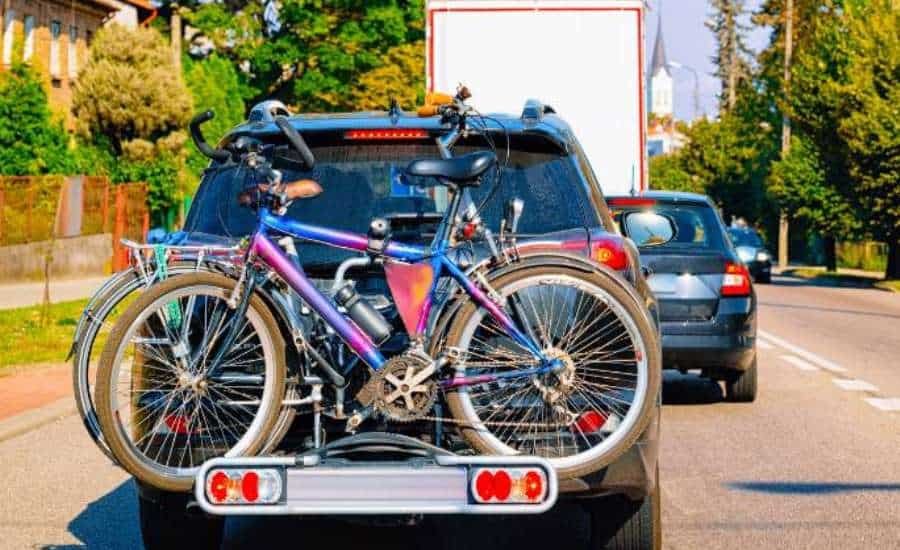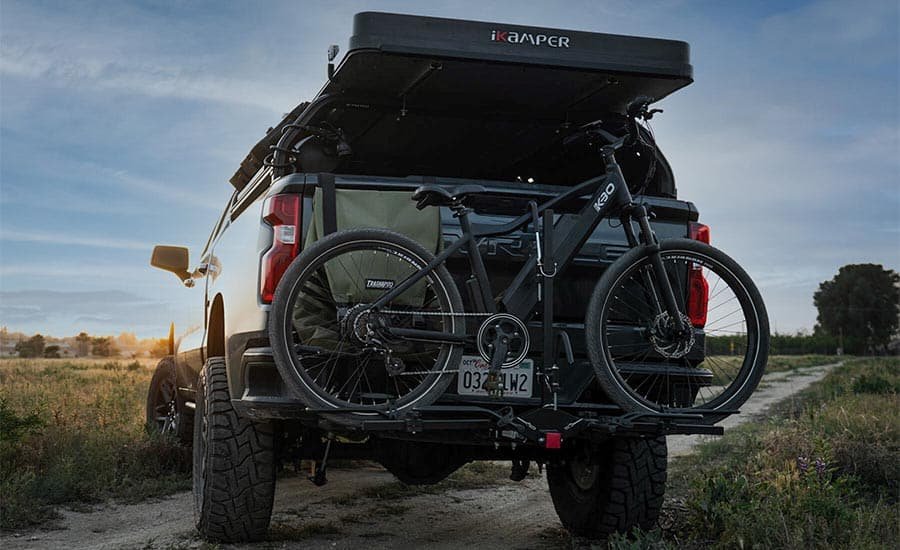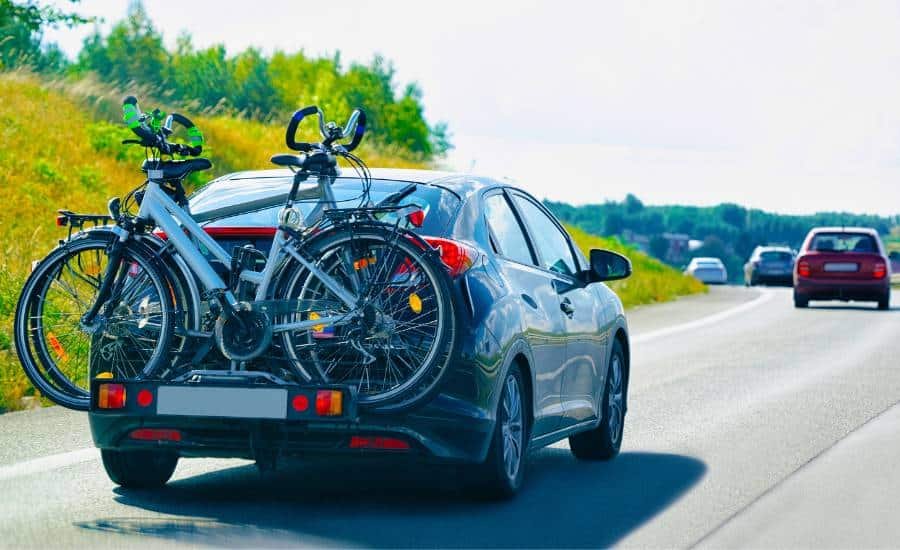Transporting an electric bike can be a challenging task as e-bikes are generally heavier than regular bikes due to their motor and battery system. To transport an e-bike safely, it is important to take necessary precautions and follow proper guidelines to avoid any damage to the bike or its components.
According to a survey conducted by the World Economic Forum, the sales of electric bikes increased by 145% in 2020, reflecting the growing popularity of e-bikes among consumers. If you are among the people who already have an e-bike or intend to get one, it is essential to understand how to transport an e-bike properly, whether for personal use or commercial shipping purposes.
How Do You Transport an E-bike?

Transporting an e-bike requires careful planning and consideration, whether you are shipping it, carrying it on a vehicle, or traveling with it. Here are some tips and methods for transporting an e-bike:
Shipping
If you need to ship your e-bike, you will need to take some precautions to ensure its safe arrival. First, you will need to get approval from the courier, airline, and potentially national authorities. You should also remove any detachable parts, such as the battery or pedals, and pack them separately. Use a sturdy box with adequate padding to protect the bike during transit.
Carrying on a Vehicle
When transporting an e-bike inside a vehicle, make sure to lay the bike drivetrain side up, and take care that the cables and handlebar-mounted control systems (display) are not getting rubbed or damaged. Place a blanket or protective cover over the e-bike to prevent damage. If using a bike rack, make sure the rack is rated for the weight of your e-bike, and secure the bike tightly to prevent it from shifting or falling off during transport.
E-bike Trailer
Ebike trailers are designed for electric bicycles and offer a secure and convenient way to transport your bike. They come in various sizes and styles, with options ranging from basic platforms with wheel chocks to multi-level enclosed trailers.
Ebike trailers can be attached to a vehicle via hitch or used as standalone carts. When selecting an e-bike trailer, check the weight capacity, size, and hitch compatibility, and follow safety guidelines for bike security. Ebike trailers provide a safe and practical option for transporting your electric bicycle over short or long distances.
How Do You Carry an Ebike Up and Down Stairs?

One popular method for carrying an electric bike upstairs and downstairs is using a bike shoulder carry pad. This accessory is designed to rest the top tube of the bike on your shoulder while you hold the bike with one hand on the lower frame. This method is relatively easier for many cyclists, and it is also an efficient way to carry the bike through narrow or crowded spaces.
Another approach for carrying an electric bike upstairs and downstairs is demonstrated in a video on YouTube, in which the presenter lifts and carries the bike by the frame. This method may be more difficult for some riders, especially for those who are not used to carrying heavy loads.
Marc Kimball, a YouTuber, demonstrates another approach for carrying an electric bike upstairs and downstairs in a video. He uses a combination of lifting and pushing techniques, along with the help of a bungee cord and a stair-step, to transport a 79-pound e-bike. This method may require more effort and equipment, but it can be effective for heavier e-bikes.
There are different methods and accessories available for carrying an electric bike upstairs and downstairs. The choice of method may depend on the weight and size of the bike, the strength of the rider, and the available equipment or accessories.
Can I put an electric bike on a bike rack?
Do Ebikes Need Special Bike Racks?

Electric bikes, or e-bikes, are generally heavier and bulkier than regular bikes, so they may require a special bike rack that can handle the extra weight and size. However, not all e-bikes are the same, so the type of bike rack you need may depend on the weight and dimensions of your specific e-bike.
If you have a heavier e-bike, it’s essential to make sure that the bike rack you use can handle the weight. Some bike racks are specifically designed for e-bikes, with a higher weight capacity and sturdier construction. These racks often have larger wheel trays, stronger mounting systems, and thicker steel tubing to support the extra weight of an e-bike.
In general, it’s best to look for a bike rack that has a weight capacity of at least 60 pounds, as most e-bikes weigh between 40 and 70 pounds. Also, consider the size and shape of your e-bike, as some racks may not be able to accommodate larger frames or wider tires.
In summary, while not all e-bikes require special bike racks, it’s essential to make sure that the rack you use can handle the extra weight and size of your specific e-bike. Look for racks with higher weight capacities and sturdier construction, and consider the size and shape of your e-bike when choosing a rack.
Different Types of Ebike Racks for Cars

There are several different types of bike racks that are suitable for carrying e-bikes on cars. Here are a few examples:
Hitch-mounted Bike Racks
These racks attach to the hitch receiver on the back of your vehicle and are available in both platform and hanging designs. Platform racks support the bike by the wheels and are ideal for heavier e-bikes, while hanging racks support the bike by the frame and are more suitable for lighter e-bikes.
Trunk-mounted Bike Racks
These racks attach to the trunk or hatchback of your vehicle using straps and hooks. They are typically less expensive than hitch-mounted racks, but may not be as stable and may require more effort to install and remove.
Roof-mounted Bike Racks
These racks attach to the roof of your vehicle using crossbars or a specialized rack system. They are ideal for vehicles with lower hitch receivers or limited trunk space, but may require more effort to lift and secure the e-bike onto the roof.
Tailgate Pads
These pads are designed to be placed over the tailgate of a pickup truck and provide a soft, non-slip surface for e-bikes to rest on during transport. They are a good option for those who frequently transport multiple bikes and want a simple, low-cost solution.
Using a Hitch-mounted Bike Rack to Transport Your Electric Bike

Using a hitch-mounted bike rack is a popular and convenient option for transporting electric bikes. Here are some tips for using a hitch-mounted bike rack to transport your e-bike:
🔲 Choose the right rack: Make sure the rack you choose is rated for the weight of your e-bike and can accommodate its size and shape. Platform-style hitch racks are generally recommended for e-bikes as they provide more support and stability compared to hanging-style racks.
🔲 Install the rack correctly: Follow the manufacturer’s instructions carefully when installing the rack onto your hitch receiver. Ensure that the rack is securely fastened and that any locking mechanisms are engaged.
🔲 Load the bike properly: Position the e-bike on the rack so that the wheels are securely in the wheel trays and the bike frame is supported by the rack. Use any additional straps or tie-downs to secure the bike and prevent it from moving during transit.
🔲 Check the bike and rack regularly: Make sure to periodically check the bike and rack during transport to ensure that everything is still secure and in place. If you notice any issues, stop and adjust as necessary before continuing your journey.
🔲 Be mindful of weight distribution: When transporting multiple bikes or other items on the rack, make sure to distribute the weight evenly to avoid putting too much stress on the hitch or the vehicle itself.
By following these tips, you can safely and securely transport your e-bike using a hitch-mounted bike rack.
Using a Roof-mounted Bike Rack to Transport Your Electric Bike

Using a roof-mounted bike rack is another option for transporting electric bikes, but it may not be the most convenient or practical method. Here are some tips for using a roof-mounted bike rack to transport your e-bike:
🔲 Choose the right rack: Make sure the rack you choose is rated for the weight of your e-bike and can accommodate its size and shape. Look for a rack that can securely hold the bike’s frame and wheels in place.
🔲 Install the rack correctly: Follow the manufacturer’s instructions carefully when installing the rack onto your vehicle’s roof. Ensure that the rack is securely fastened and that any locking mechanisms are engaged.
🔲 Load the bike properly: Position the e-bike on the rack so that the wheels are securely in the wheel trays and the bike frame is supported by the rack. Use any additional straps or tie-downs to secure the bike and prevent it from moving during transport.
🔲 Be mindful of height clearance: Keep in mind that the height of the bike and rack on the roof of your vehicle may increase the overall height of your vehicle, which could affect clearance when passing under bridges, trees, or other obstacles.
🔲 Check the bike and rack regularly: Make sure to periodically check the bike and rack during transport to ensure that everything is still secure and in place. If you notice any issues, stop and adjust as necessary before continuing your journey.
Roof-mounted bike racks can be a good option for transporting e-bikes, especially if you have a vehicle with a low hitch weight capacity. However, they can be more challenging to load and unload, and may not be as convenient for everyday use. Consider the pros and cons carefully before choosing a roof-mounted bike rack for your e-bike transport needs.
Using a Trunk-mounted Bike Rack to Transport Your Electric Bike

Trunk-mounted bike racks are a popular option for transporting electric bikes, as they are easy to install and can fit a wide range of vehicles. However, when it comes to carrying heavy electric bikes, it is important to choose a trunk-mounted bike rack that is specifically designed to handle the weight and size of an e-bike.
One popular trunk-mounted bike rack for e-bikes is the Saris Bones EX 3-Bike Trunk Rack, which can carry up to three bikes weighing up to 35 pounds each. The rack is designed with ratcheting straps and adjustable arms to securely hold the bikes in place, while also allowing for easy loading and unloading.
Another option is the Hollywood Racks F4 Heavy Duty 4-Bike Trunk Mount Rack, which can carry up to four bikes weighing up to 80 pounds in total. The rack features extra-wide wheel holders to accommodate fat tires often found on electric bikes, as well as adjustable straps to secure the bikes in place.
It is important to note that when using a trunk-mounted bike rack, the bikes will be exposed to the elements during transport, so it is recommended to use bike covers or other forms of protection to keep them clean and dry.
Overall, trunk-mounted bike racks can be a convenient and cost-effective option for transporting electric bikes, as long as you choose a rack that is designed to handle the weight and size of your bike, and take necessary precautions to protect your bike during transport.
How to Transport an Electric Bike in a Vehicle Without a Bike Rack

Transporting an electric bike in a vehicle without a bike rack can be a bit challenging, but it’s not impossible. Here are a few methods that can be used to transport an electric bike in a vehicle without a bike rack:
🔲 Folding the bike: Many electric bikes can be folded, which makes them easier to transport in a vehicle without a bike rack. Simply fold the bike and place it in the trunk or backseat of the vehicle.
🔲 Using a bike bag or case: A bike bag or case can be used to transport an electric bike in a vehicle without a bike rack. These bags and cases are designed to protect the bike during transport and can be placed in the trunk or backseat of the vehicle.
🔲 Removing the front wheel: Another option is to remove the front wheel of the electric bike and place it in the trunk or backseat of the vehicle. This will make the bike more compact and easier to transport.
🔲 Using bungee cords or straps: If none of the above methods work for you, you can try using bungee cords or straps to secure the electric bike in the backseat or trunk of the vehicle. Be sure to wrap the cords or straps tightly around the bike to prevent it from moving during transport.
Tips for Safely Loading and Securing Your Electric Bike Onto a Carrier

If you are using a bike rack or carrier to transport your electric bike, it is important to load and secure it properly to prevent damage to the bike and ensure safety on the road. Here are some tips for loading and securing your electric bike onto a carrier.
🔲 Choose a carrier that is compatible with your electric bike: Make sure the carrier you choose is designed to accommodate the weight and size of your electric bike.
🔲 Position the bike correctly: When loading the bike onto the carrier, make sure it is positioned correctly. If you are using a hitch-mounted carrier, position the bike so that the heaviest part (usually the battery) is over the hitch. If you are using a roof-mounted carrier, make sure the bike is centered on the rack.
🔲 Use proper straps and tie-downs: Use high-quality straps and tie-downs that are designed to secure bikes. Make sure the straps are tight enough to hold the bike securely in place, but not so tight that they damage the bike.
🔲 Protect the bike frame: Use a protective cover or padding to protect the bike frame from scratches or damage from the straps or tie-downs.
🔲 Check the bike and carrier frequently: While driving, periodically check the bike and carrier to ensure that everything is secure and in place.
Benefits of using a bike rack to transport an electric bike
Using a bike rack to transport an electric bike offers several benefits, including:
🟩 Convenience: A bike rack allows for easy transportation of the bike without the need for disassembly or the use of a separate vehicle.
🟩 Safety: A bike rack securely fastens the bike to the vehicle, reducing the risk of damage to both the bike and the vehicle during transportation.
🟩 Versatility: Bike racks come in different sizes and shapes, allowing for the transportation of different types of electric bikes, including mountain e-bikes, city e-bikes, and road e-bikes.
🟩 Capacity: Most bike racks have the capacity to carry multiple bikes, making them an ideal solution for transporting electric bikes with friends or family members.
🟩 Accessibility: Bike racks are designed to make it easy to load and unload electric bikes, eliminating the need for heavy lifting and awkward maneuvers.
Legal Considerations When Transporting an Electric Bike

When transporting an electric bike, there are a few legal considerations to keep in mind:
🔲 Weight and size restrictions: Be aware of weight and size restrictions on roads and highways. If you’re transporting an electric bike on a carrier, make sure it doesn’t exceed the maximum weight or size limits.
🔲 Visibility: Ensure that your bike and the carrier are visible to other drivers. If necessary, attach additional lighting or reflectors to the carrier to increase visibility.
🔲 Licensing and registration: Check if your state requires electric bikes to be licensed or registered for transport on public roads. Some states may require registration, while others may not.
🔲 Liability insurance: Make sure your liability insurance covers any damage or accidents that may occur while transporting your electric bike. Some insurance policies may require additional coverage for transporting bikes.
Safety Considerations When Transporting an Electric Bike

Transporting an electric bike safely requires taking a few precautions. Here are some safety considerations to keep in mind when transporting an electric bike:
🔲 Secure the bike properly: Make sure the bike is securely fastened to the carrier, and the carrier is properly attached to the vehicle.
🔲 Protect the bike: Use padding or a cover to protect the bike from damage during transport.
🔲 Check the weight limit: Ensure that the carrier and vehicle can handle the weight of the electric bike, especially if you plan to transport multiple bikes.
🔲 Be mindful of the bike’s battery: If transporting an electric bike with a lithium-ion battery, ensure it is properly installed, turned off, and protected from damage.
By taking these safety considerations into account, you can help ensure a safe and successful transport of your electric bike.
FAQs
Can I transport my electric bike on a regular bike rack?
As long as the rack is designed to support the weight of your electric bike and has the proper security features.
Is it safe to transport my electric bike on a hitch-mounted bike rack?
Hitch-mounted bike racks are a secure and safe way to transport electric bikes. Just make sure to choose a rack that is rated for the weight of your bike.
Can I transport my electric bike on a roof-mounted bike rack?
You can do that, but you should be cautious when loading and unloading your electric bike from the roof-mounted bike rack, especially if it’s heavy.
How do I secure my electric bike on a bike rack?
Use a sturdy bike lock to secure your electric bike to the rack, and make sure to secure all of the bike’s components, including the battery and display.
Can I transport my electric bike in my car without a bike rack?
You can do that, but you should take precautions to protect your bike from damage and secure it properly in your vehicle.
Do I need to remove the battery from my electric bike when transporting it?
It depends on the type of bike and the carrier you’re using. Check with the manufacturer’s guidelines or carrier instructions to see if you need to remove the battery.
Are there any legal considerations when transporting an electric bike?
Some airlines, couriers, and national authorities have regulations on shipping electric bikes with lithium batteries, and some states or countries have specific laws on transporting electric bikes on certain roads or highways. Make sure to check the local laws and regulations before transporting your electric bike.

